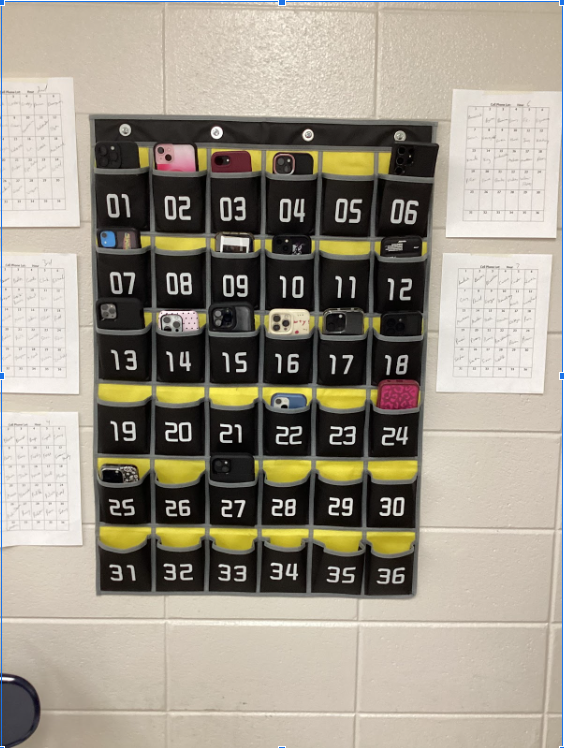A generation ago, classrooms looked very different. Students relied on textbooks, chalkboards, and the occasional movie shown on a bulky square TV. Today, in the 2010s and beyond, phones, tablets, laptops, and projectors have replaced those older tools. Technology has reshaped how students learn—and how teachers teach.
Phones, in particular, have become central to everyday life. They offer instant access to information, emergency communication, and endless opportunities for hobbies, vlogs, and social connections. But inside classrooms, their presence sparks debate.
“It has made me less concentrated on the phones and makes people pay more attention in class,” said Mr. Forst.
“The phones can get people not concentrated enough and would take it away if they use it too much or do something they weren’t supposed to be doing,” added Ms. Arellano.
“I do not mind phones in class, but if there was a rule or policy in class, I would take it,” said Mr. Blakey.
“My students are happoer and more engaged and seemingly happier than they have been in a long time– maybe helping curb the distractions is just what they needed and generally healthier for us all,” shared Mr. McKinnon.
Teachers often voice frustration when students’ attention drifts to their screens. Phones can affect self-esteem, mental health, and motivation, leading to lower performance and strained classroom environments. For educators, it can also feel like a challenge to their efforts—and, some argue, their professional satisfaction.
Still, phones are not all bad. They’ve proven to be lifesaving in emergencies, helping people call for help or navigate dangerous situations. The problem, critics say, is not the device itself but how—and how often—it’s used.
A recent study highlights the scale of the issue. According to WWAY News, “Teens aren’t just sneaking quick glances at their phones during class. They’re spending an average of 1.5 hours on them every school day, with 25% of students logging on for more than two hours.” That time adds up to hours lost in potential learning.
Social media compounds the issue, blending school life with the digital world. For many students, the constant pull of notifications makes it difficult to stay present in class. While some defend phones as a necessary part of modern life, others argue that their unchecked use is stunting focus, development, and meaningful engagement with education.
The debate over phones in schools mirrors a broader tension: how to balance the benefits of new technology with the values of older, simpler learning tools. And while many students prefer digital screens to books, some educators continue to champion “old school” methods, reminding them that turning a page can be just as powerful as refreshing a feed.












